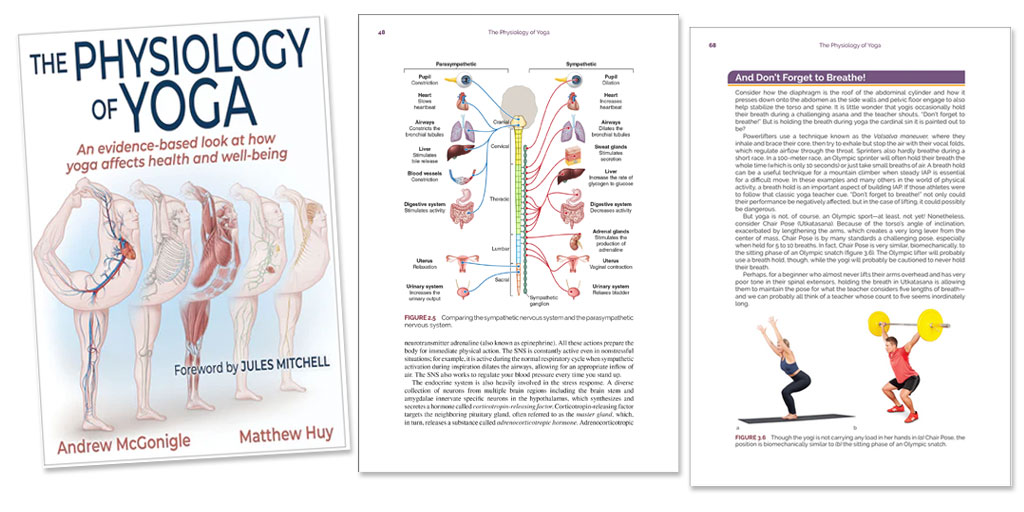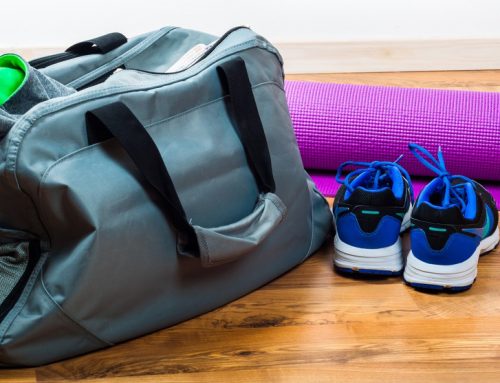Human Kinetics has just released The Physiology of Yoga!
While many people practice yoga simply because it helps them feel good, the physiological basis for yoga’s effects on the body and mind is often unknown or misunderstood. Understanding these physiological concepts can help to deepen your yoga practice.
While many people practice yoga simply because it helps them feel good, the physiological basis for yoga’s effects on the body and mind is often unknown or misunderstood. Understanding these physiological concepts can help to deepen your yoga practice.
The Physiology of Yoga separates speculation from fact by examining how the body responds and adapts to yoga within many systems of the body: musculoskeletal, nervous, respiratory, cardiovascular, lymphatic, immune, endocrine, reproductive, and digestive. Straightforward explanations guide you in sorting through conflicting information about what yoga really can help you achieve and in evaluating whether certain yoga methods provide benefits to any or all of those systems.
You can experiment with concepts through Try It Yourself sidebars, which focus on mindful movement, meditation, and breathing. The 14 Myth or Fact sidebars explore popular claims about yoga, such as whether a shoulder stand can stimulate the thyroid or if twists can detoxify the liver. You’ll get the most current research to determine the validity of various claims so you can avoid practices that could be harmful or counterproductive and can decide for yourself what works for your practice.
About the Authors
Andrew McGonigle has been practicing yoga and meditation for over 15 years and teaching yoga since 2009. He teaches anatomy and physiology in many yoga teacher training courses and leads his own international workshops.
Although McGonigle studied anatomy in great detail during medical school, he learned to look at it from a different angle and create ways to make it relevant to yoga. He enrolled in hands-on dissection classes focused on fascia and spent his spare time rereading anatomy books, listening to podcasts, and talking about anatomy with anyone who would listen.
McGonigle previously contributed a monthly article to Om Yoga & Lifestyle magazine (“360° Yoga With Doctor Yogi”) and wrote two chapters for Yoga Teaching Handbook: A Practical Guide for Yoga Teachers and Trainees. He is also the author of Supporting Yoga Students With Common Injuries and Conditions. McGonigle resides in Los Angeles.
Matthew Huy (pronounced “hooey”) has been teaching yoga since 2005. He teaches anatomy and physiology in many teacher training courses in addition to providing mentoring and professional development workshops to yoga teachers.
While studying biology in college, Huy discovered the joy of movement when he enrolled in a dance class and then a yoga class. A few years later, he changed tack and went on to complete a bachelor of arts degree in dance from California State University at Long Beach and completed teacher training courses in yoga, Pilates mat work, TRX, and Thai yoga massage. In 2021, he completed a master of science degree in sport, health, and exercise science at Brunel University at London, where he focused on exercise physiology and pain science. His master’s research centered on the impact of yoga teachers’ language on their students. Huy resides near London in the United Kingdom.







